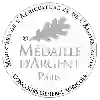
Château CatiasHaut-Médoc
This wine generally goes well with poultry, beef or game (deer, venison).
Food and wine pairings with Haut-Médoc
Pairings that work perfectly with Haut-Médoc
Original food and wine pairings with Haut-Médoc
The Haut-Médoc of Château Catias matches generally quite well with dishes of beef, lamb or game (deer, venison) such as recipes of fresh sausage, shoulder of lamb with a spoon or roast duck breast stuffed with porcini mushrooms and chanterelles.
Details and technical informations about Château Catias's Haut-Médoc.
Discover the grape variety: Chenanson
Chenanson noir is a grape variety that originated in France (Languedoc). It produces a variety of grape specially used for wine making. It is rare to find this grape to eat on our tables. This variety of grape is characterized by large bunches and small grapes. Chenanson noir can be found in several vineyards: South-West, Cognac, Bordeaux, Languedoc & Roussillon, Provence & Corsica, Rhone Valley, Loire Valley, Savoie & Bugey, Beaujolais.
Informations about the Château Catias
The Château Catias is one of of the world's greatest estates. It offers 1 wines for sale in the of Haut-Médoc to come and discover on site or to buy online.
The wine region of Haut-Médoc
The wine region of Haut-Médoc is located in the region of Médoc of Bordeaux of France. Wineries and vineyards like the Château Lestage Simon or the Château La Lagune produce mainly wines red, white and pink. The most planted grape varieties in the region of Haut-Médoc are Cabernet-Sauvignon, Merlot and Cabernet franc, they are then used in wines in blends or as a single variety. On the nose of Haut-Médoc often reveals types of flavors of leather, sour cherry or almonds and sometimes also flavors of chalk, hay or orange.
The wine region of Bordeaux
Bordeaux, in southwestern France, is one of the most famous, prestigious and prolific wine regions in the world. The majority of Bordeaux wines (nearly 90% of the production Volume) are the Dry, medium and Full-bodied red Bordeaux blends for which it is famous. The finest (and most expensive) are the wines of the great châteaux of Haut-Médoc and the right bank appellations of Saint-Émilion and Pomerol. The former focuses (at the highest level) on Cabernet Sauvignon, the latter on Merlot.
The word of the wine: Cupbearer
Person in charge of choosing and serving wines. Old term for the sommelier.




